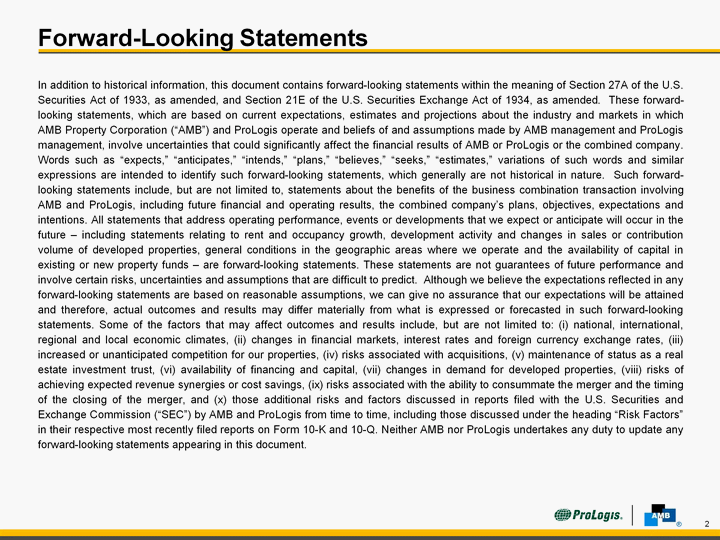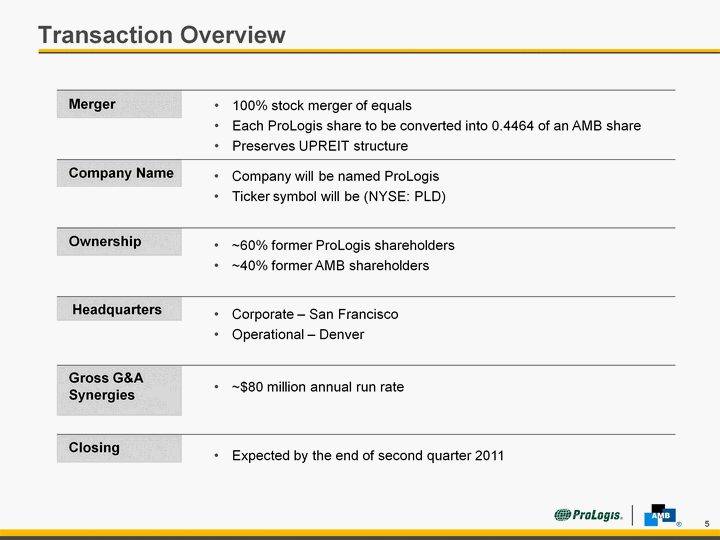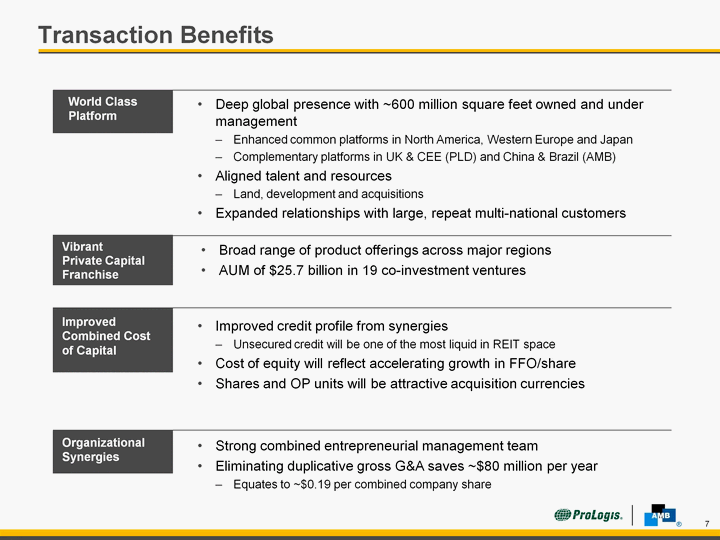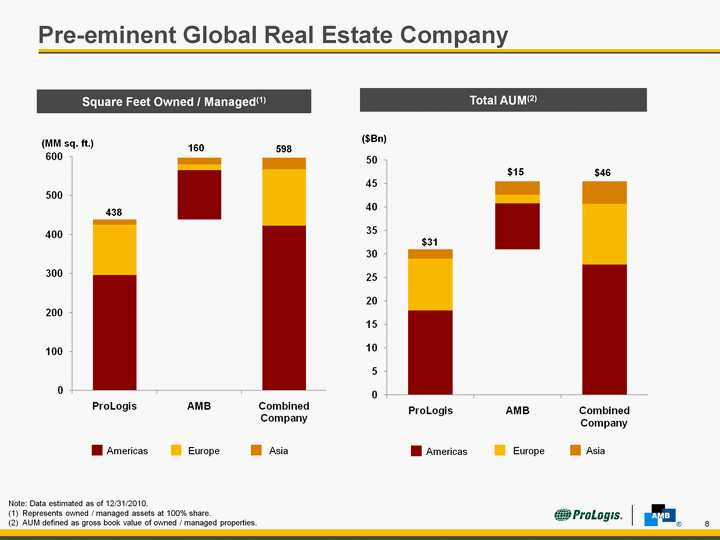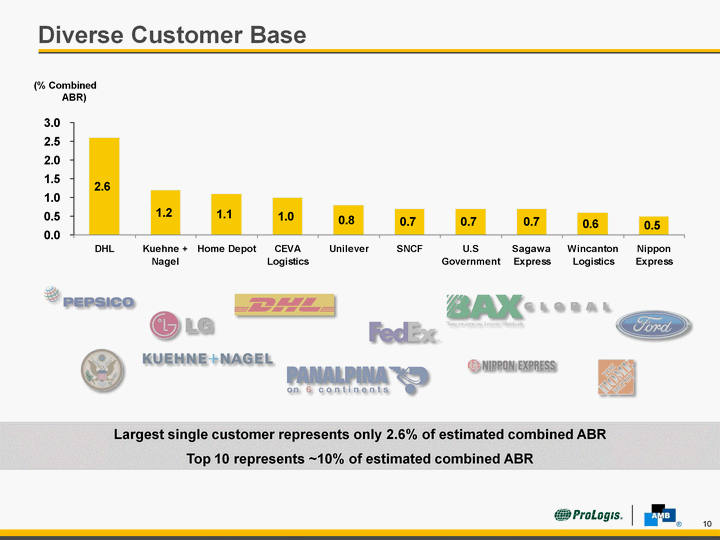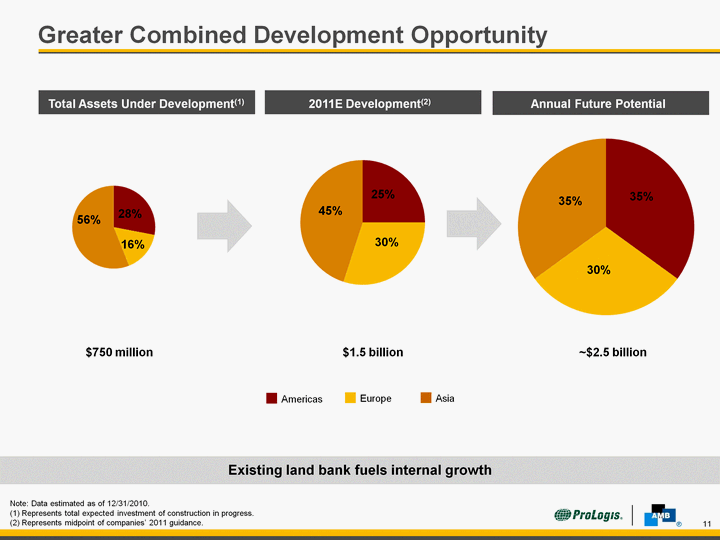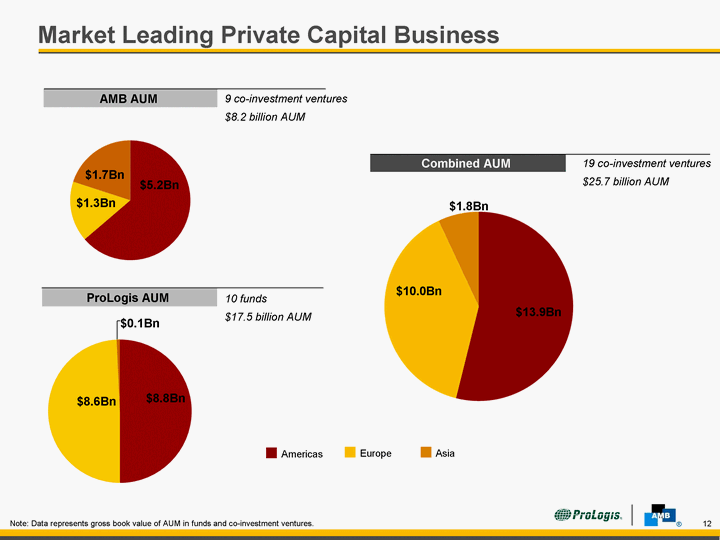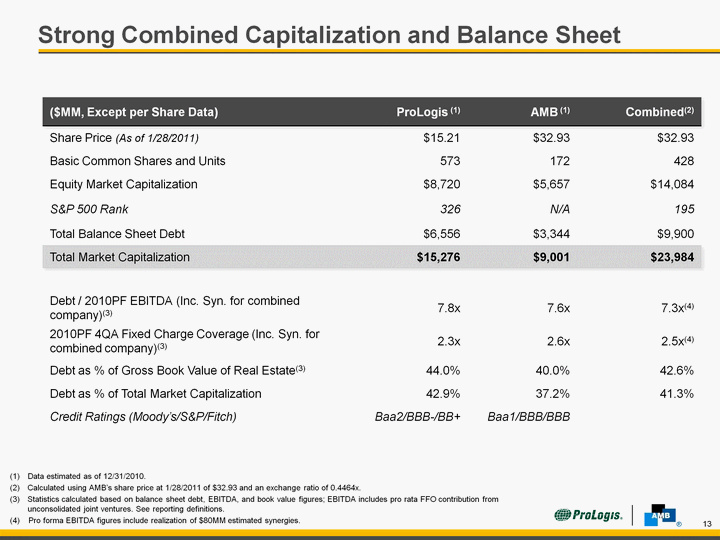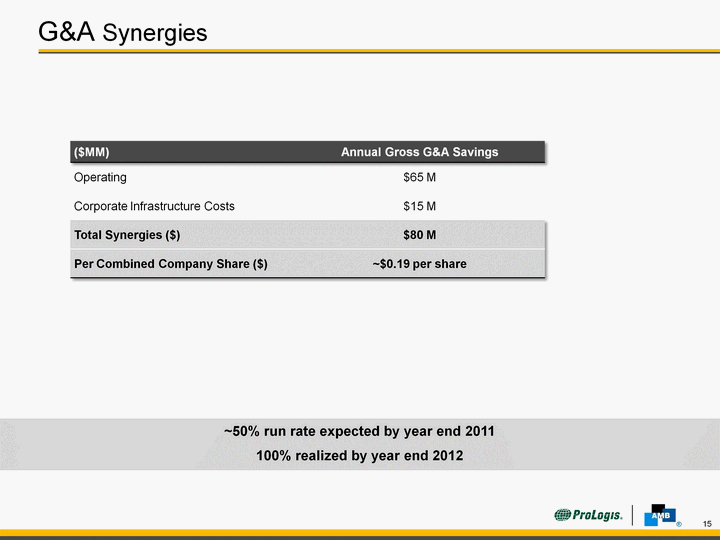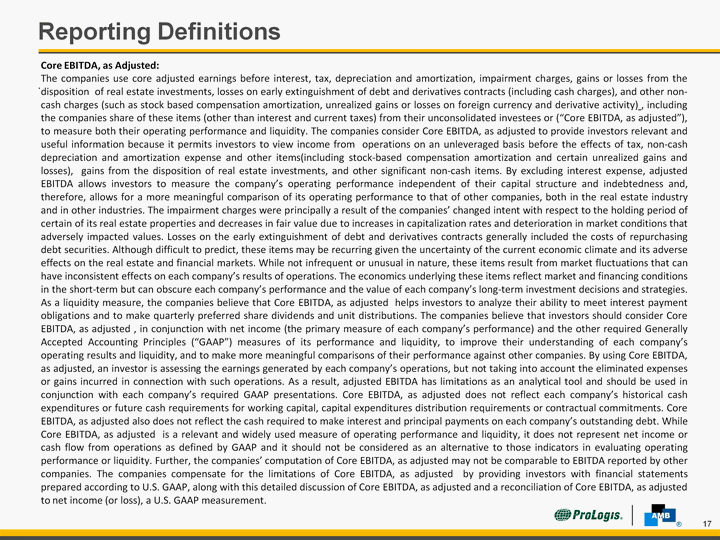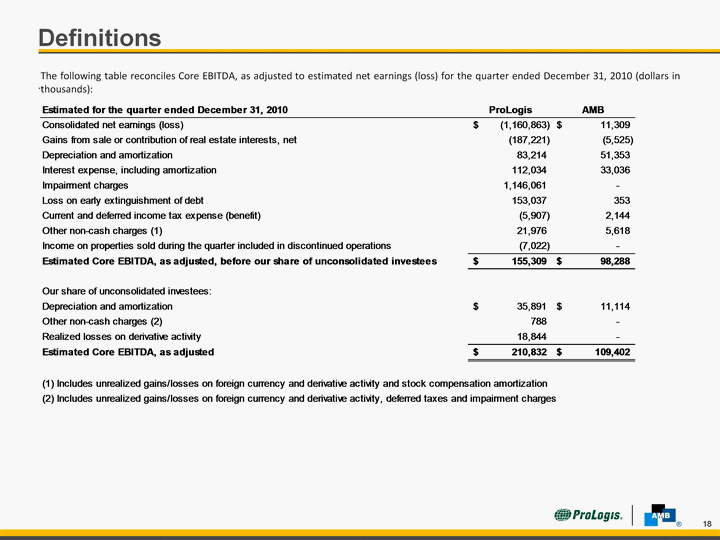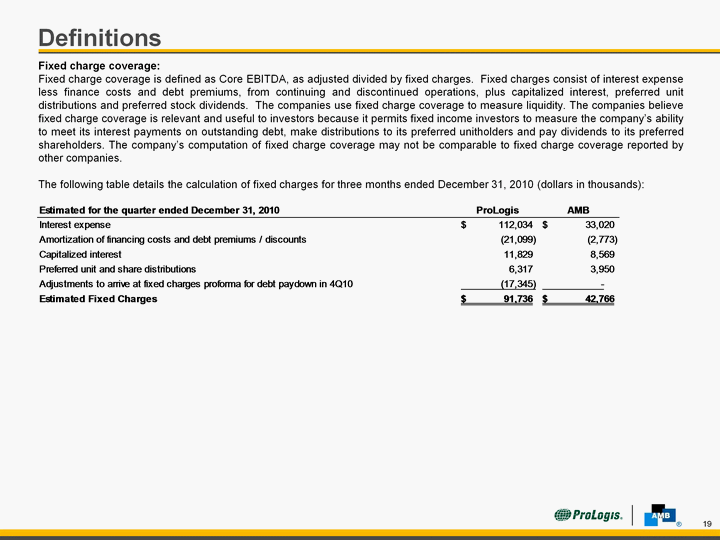| Reporting Definitions .. Core EBITDA, as Adjusted: The companies use core adjusted earnings before interest, tax, depreciation and amortization, impairment charges, gains or losses from the disposition of real estate investments, losses on early extinguishment of debt and derivatives contracts (including cash charges), and other non- cash charges (such as stock based compensation amortization, unrealized gains or losses on foreign currency and derivative activity) , including the companies share of these items (other than interest and current taxes) from their unconsolidated investees or ("Core EBITDA, as adjusted"), to measure both their operating performance and liquidity. The companies consider Core EBITDA, as adjusted to provide investors relevant and useful information because it permits investors to view income from operations on an unleveraged basis before the effects of tax, non-cash depreciation and amortization expense and other items(including stock-based compensation amortization and certain unrealized gains and losses), gains from the disposition of real estate investments, and other significant non-cash items. By excluding interest expense, adjusted EBITDA allows investors to measure the company's operating performance independent of their capital structure and indebtedness and, therefore, allows for a more meaningful comparison of its operating performance to that of other companies, both in the real estate industry and in other industries. The impairment charges were principally a result of the companies' changed intent with respect to the holding period of certain of its real estate properties and decreases in fair value due to increases in capitalization rates and deterioration in market conditions that adversely impacted values. Losses on the early extinguishment of debt and derivatives contracts generally included the costs of repurchasing debt securities. Although difficult to predict, these items may be recurring given the uncertainty of the current economic climate and its adverse effects on the real estate and financial markets. While not infrequent or unusual in nature, these items result from market fluctuations that can have inconsistent effects on each company's results of operations. The economics underlying these items reflect market and financing conditions in the short-term but can obscure each company's performance and the value of each company's long-term investment decisions and strategies. As a liquidity measure, the companies believe that Core EBITDA, as adjusted helps investors to analyze their ability to meet interest payment obligations and to make quarterly preferred share dividends and unit distributions. The companies believe that investors should consider Core EBITDA, as adjusted , in conjunction with net income (the primary measure of each company's performance) and the other required Generally Accepted Accounting Principles ("GAAP") measures of its performance and liquidity, to improve their understanding of each company's operating results and liquidity, and to make more meaningful comparisons of their performance against other companies. By using Core EBITDA, as adjusted, an investor is assessing the earnings generated by each company's operations, but not taking into account the eliminated expenses or gains incurred in connection with such operations. As a result, adjusted EBITDA has limitations as an analytical tool and should be used in conjunction with each company's required GAAP presentations. Core EBITDA, as adjusted does not reflect each company's historical cash expenditures or future cash requirements for working capital, capital expenditures distribution requirements or contractual commitments. Core EBITDA, as adjusted also does not reflect the cash required to make interest and principal payments on each company's outstanding debt. While Core EBITDA, as adjusted is a relevant and widely used measure of operating performance and liquidity, it does not represent net income or cash flow from operations as defined by GAAP and it should not be considered as an alternative to those indicators in evaluating operating performance or liquidity. Further, the companies' computation of Core EBITDA, as adjusted may not be comparable to EBITDA reported by other companies. The companies compensate for the limitations of Core EBITDA, as adjusted by providing investors with financial statements prepared according to U.S. GAAP, along with this detailed discussion of Core EBITDA, as adjusted and a reconciliation of Core EBITDA, as adjusted to net income (or loss), a U.S. GAAP measurement. |

